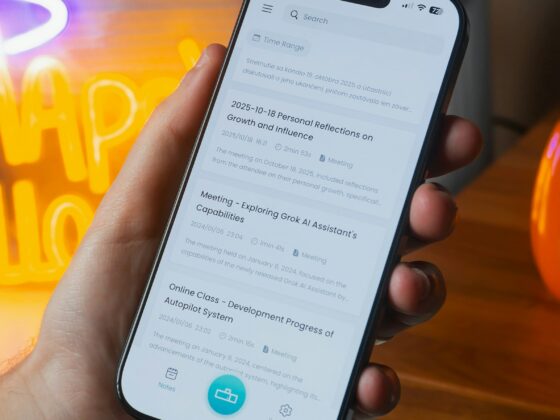CXO+AI is for travel leaders interested in AI strategy and business outcomes.
The Matador AI Roadmap provides a high-level strategic framework for how DMOs can capitalize on AI to optimize internal operations, resources and knowledge, and ultimately, drive partner revenue.
DMOs have all kinds of strategic plans, master plans, business and marketing plans, etc. The Matador AI Roadmap outlines the process to develop your AI strategic plan. It defines the big picture outlook for AI as the future of commerce, and it proposes a methodology to help DMO leaders prioritize, organize and navigate how they go about integrating AI across their organization.
Presently, we’re rolling this out with
Visit Mesa
,
Tourism Richmond
in British Columbia, and
The Florida Keys & Key West
. The three CEOs for those organizations have all agreed to share takeaways and business outcomes with each others’ teams to cross-pollinate learning and accelerate AI process integration.
That spirit of knowledge sharing and co-learning for me is huge, because we as an industry are all pretty much flying blindly with AI from a macro perspective. Yes, we’ve come a long way in the last year. Every DMO CEO I talk to these days is now implementing various AI processes and seeing value. However, we’re all kind of flying this plane while we’re building it at the same time, and we don’t really have a destination, or even due north, in mind.
The Matador AI Roadmap was designed to identify where we’re going with this emergent technology that’s both incredibly powerful and often highly unpredictable. It also defines how high-end AI chat platforms, like Matador Network’s
GuideGeek AI
, are the tip of the spear for agentic commerce.
The following guidelines are based on experience in the workplace to deliver new value with AI for your team, board, industry partners and community stakeholders.
Internal & External Direction
Every decision related to AI strategy should first be defined through an internal or external lens. Your board members will typically view internal workplace optimization as tactical. Externally, AI integrations that are consumer-facing and revenue generating are usually perceived as more strategic.
Internal Facing
From an internal standpoint, the focus of the AI Roadmap is on optimizing operations to take advantage of an organization’s aggregate of resources and knowledge. Imagine the totality of insights across every team member in terms of their expertise and networks in their communities.
AI systems are designed to pool and capitalize on that, but only if an organization’s knowledge base is structured intelligently. That means rebuilding your folder structures and files naming conventions so an AI can find everything. According to Slack, workers spend 41% of their time on menial tasks, including endless hours just looking for information. The overall losses related to productivity, quality of work and workplace, and physical/mental health are crazy.
So let’s start there with AI strategy to address our internal digital dumpster fire.
External Facing
Externally, from a marketing, sales and visitor/partner engagement perspective, AI strategy begins with integrating a robust AI chat platform like GuideGeek. DMOs have never really had proprietary information on who their visitors are. They have geo-location, credit card spend, event attendance data, etc., which show visitor behavior. But none of those really identify visitor motivations and mindsets indepth. With an AI chat platform, DMOs can now pull analytics showing what visitors are actually asking and what they want to know on an individual and aggregate basis.
We launched our new GuideGeek V2 analytics dashboard this past week, which provides deeper, fuller insights into visitor psychographics. That data then informs all kinds of resource allocation decisions related to content development, AI SEO strategy, data analysis, product and destination development, community engagement, etc.
CEO Roles
AI is best defined as a new digital “co-intelligence” that can communicate, reason and create for the first time ever, versus just another new technology. We emphasize that AI is really a new environment for collaboration more than anything, just not solely among humans anymore.
Learning AI is not like learning Photoshop. You can only “teach” AI up to a point, like trying to teach someone how to ride a bike. You can’t teach a child how to stay on two wheels without falling in a classroom. He or she actually has to start pedaling, and eventually the child’s mind and body basically have a conversation, so to speak, with the bike to grasp the fundamentals of moving forward successfully. Same with AI. The only way to learn AI is to use AI.
Helping human teams embrace this new co-intelligence (and it’s not like there’s a choice) falls under the umbrella of change management. That’s a CEO’s wheelhouse. It will take more than a few years for many humans to reconcile their minds and values with this new relationship, and it falls on the CEO’s shoulders to steward that reconciliation.
Likewise, CEOs oversee AI governance, policy and privacy. I’ve shared before how AI governance should be viewed less like a car brake and more like a steering wheel to inform, direct and accelerate AI adoption and integration.
Lastly, only CEOs can scale long-term AI benefits and business outcomes effectively. You can’t really delegate this. AI efforts will plateau at times, some or many AI experimentations will fail, and there are always staff members who will drag their feet because they just don’t like AI. DMO CEOs are chief people officers and it’s on them to create the right culture for scaling AI platforms and processes effectively for everyone in their crews.
Agentic AI
This is where things get interesting. AI agents and agentic commerce might sound super confusing for many or most staff members. Lots of land mines to watch out for, sure, but even more reasons for us building a macro DMO AI strategic framework.
One of the key objectives for the AI Roadmap is to elevate AI agents and agentic commerce as the two interrelated cornerstones for AI strategy, and explain why. Doing so shows the true big picture value of AI, and it drives home how we eventually need to move way beyond training people the basics of prompting.
Yes, it’s intimidating, but we introduce the labels and contexts relating to agentic AI early on in the process. That gets some people thinking bigger about AI, and it entices the AI champions in the group to start experimenting with agents.
AI Agents (Internal)
For internal AI strategy, leading DMOs are developing AI agents and automated workflows to address the aforementioned 41% of time that staff members spend on grunt work and trying to find information. They are proven, they work, and most of all, they deliver measurable ROI.
We’re working with outside contractors at Matador to develop and implement agents and automations for both ourselves internally and for DMO clients. We are already seeing success, and there’s been a recent influx among our people asking for agents. It’s an amazing thing to see when staff members start requesting new AI integrations like that, proactively. That’s when you know your AI strategy is working at least on some level.
Agentic Commerce (External)
AI agents are also the foundation for agentic commerce.
According to Mastercard, “Agentic commerce is a new form of online and mobile shopping, in which an AI agent ‘closes the loop’ or completes tasks for a user — such as searching for items, comparing options and making a purchase — with limited or no manual inputs needed from that user. For example, while chatting in a generative AI app, you could tell the AI agent, ‘Book me a nonstop flight to London for under $600 next week — no red-eyes,’ and the agent will review airlines, nearby airports and your loyalty memberships and payment card rewards to identify the best option, purchase it and then share it with you.”
Just like with AI agents, developing agentic commerce architecture covers a wide spectrum of sophistication and capabilities. Going back to the analogy of flying a plane while building it with no clear final destination in mind, agentic commerce is the point on the map where we want to land.
With GuideGeek, we have Kayak, GetYourGuide, Skyscanner and other booking tools integrated into the platform with a click-through UX/UI. Looking ahead, we’re working with one national tourism organization to bring some of their national partners’ booking engines (air, hotel, tour op, etc.,) into the platform to eventually convert sales in-chat.
Subscribe to Mastercard Signals to keep up-to-date on agentic commerce and access intelligence like this Mastercard Payments Trends Navigator report.
Staff Training & AI Integration
Training staff and implementing AI processes across all departments is really the meat of the Matador AI Roadmap. But none of that should proceed without DMO leadership embracing all the above, and communicating it clearly to all staff.
Easier said than done, though. Leadership needs to continually communicate a high-level approach to AI strategy, because it won’t really click for many staff (or leadership) at the beginning of this process. That, of course, needs to be married with all the practical training initiatives we’re continuing to develop.
We’ve already learned a ton with the present work we’re doing training DMO teams. Here are a few very basic takeaways just to start explaining our process. There are obviously many more educational modules following these, ranging from predictive analytics to specific department AI training in areas like HR, finance and legal.
- Conduct an internal AI survey asking all staff to share their perceptions and usage of AI. Follow that up with small group interviews across the organization, and transcribe everything with an AI notetaker. We use Granola, but there are many others. Also, explain to staff that all meetings regarding AI will be recorded to create an internal knowledge base to identify opportunities, challenges and takeaways over time.
- Start training with a focus on just the paid/pro models of ChatGPT, Claude and Perplexity. Some staff feel confused with the sheer variety of available AI tools in front of them. We explain that, at the end of the day, the basics of using AI include an end user, an AI tool, and a knowledge base. Get people on board with that, and then show how most of the AI tools they have access to are similar in many ways.
- One of the fastest methods to advance AI understanding is showing staff how to create custom GPTs in ChatGPT. Some team members will pick up on these quickly and start integrating them into their workflows right away. These are the people who typically make up your internal AI taskforce.
- Explain and show how Google Gemini and Microsoft Copilot are AI workhorses that connect with the majority of people’s daily workflows. However, humans tend to think of those as just the next evolution of search engines. This is mental wiring that needs to be broken. Gemini and Copilot are great/good in some ways, but I’ve found that training staff on just those three native LLMs first (ChatGPT, Claude, Perplexity) is more effective for seeing the light.
- Google NotebookLM has a lot of fans. I like to walk teams through it because it’s a good way to reinforce what a knowledge base is, like we do with the custom GPTs. Also, the automated audio and video podcasts are crowd pleasers, especially with the new Join function where users can engage directly with the agentic podcast hosts.
- People don’t seem to want to read anymore. This was a rude awakening for us when we first launched the AI Roadmap with a series of online training materials. We now know we need to deliver short video instruction if we want anyone to actually look at the educational content.
- People love Descript for AI-powered video creation. Once we started showing how to use Descript, we were pleasantly surprised to see how staff really leaned in. Teaching Descript provides a fun break early in the process because people can see pretty amazing results in minutes and wrap their minds around the process fairly easily.
- Ask all staff to share how they’re using AI effectively and where they see AI failing them. Catalogue the case studies and share across the organization to accelerate learning, inspire a healthy sense of internal competition, and track learning over time.
- Staff members are also often wowed seeing AI agents in action. We use n8n to develop agents, where you can create a lot of basic automated workflows quickly. Once a few early adopters see how agents can take over some of their more tedious, time-consuming tasks, others will jump in.
Feedback Loop & Funding/Board Support
This line in the AI Roadmap is broken down into tactical internal optimization and more strategic, consumer-facing and revenue-generating sales, marketing and stakeholder engagement.
I don’t have a lot to share for this section and the following one because our focus to date has been mostly on the above phases.
Feedback Loop
The reason we record every engagement with AI Roadmap clients is to scale learning, so if one person learns something, everyone can benefit. That will be further multiplied when we starting sharing takeaways across DMOS, and eventually the industry as a whole.
Visit Mesa, Tourism Richmond and Visit Florida Keys are eager to lead this initiative, and we plan to launch a new AI thought leadership framework collectively in 2026.
Funding & Board Support
The spark that led to developing the AI Roadmap happened almost a year ago when a board member for a large DMO told me that she viewed AI integration as merely a tactic.
If this work can elevate AI in the minds of board members toward a more high-level strategic imperative, then we’ll have achieved part of our mission. There’s still some work to be done first though to collect more case studies showing direct AI business outcomes before we can make a more solid case for additional funding for AI integrations.
AI Strategic Plan
We’ve produced a mockup of what we think an AI Strategic Plan will eventually look like, but it’s too early to show presently.
For now, we’ve identified three overarching pillars, each with potential strategies, action items, timelines and targets. The KPIs are crucial, of course, for scaling AI strategy across the travel industry.
Right now, we’re thinking the three pillars might look like the following, although this is all up in the air right now:
- Optimize Internal Operations & Knowledge: The strategies include cleaning up internal folders/files to improve AI outcomes in general and develop AI agents specifically. A lot in here on training, experimentation, overall adoption, success measures, etc.
- Increase Partner Revenue with Agentic AI: Defining how DMOs develop AI agents to fuel agentic commerce is the big goal overall with the AI Roadmap. Initial strategies in this pillar begin with more low hanging fruit though, such as website redevelopment, optimizing for AI SEO, AI chat integration, etc.
- Expand Community Collaboration: We’re seeing more DMOs take a leading role in AI education for their industry and community stakeholders. The Matador AI Roadmap is perfectly suited for informing how DMO leaders can facilitate community AI workshops and increase the organization’s overall relevance and value.
For information about Matador Network’s industry leading GuideGeek AI chat platform for DMOs and their partners, visit brands.guidegeek.com and/or email greg@matadornetwork.com.










